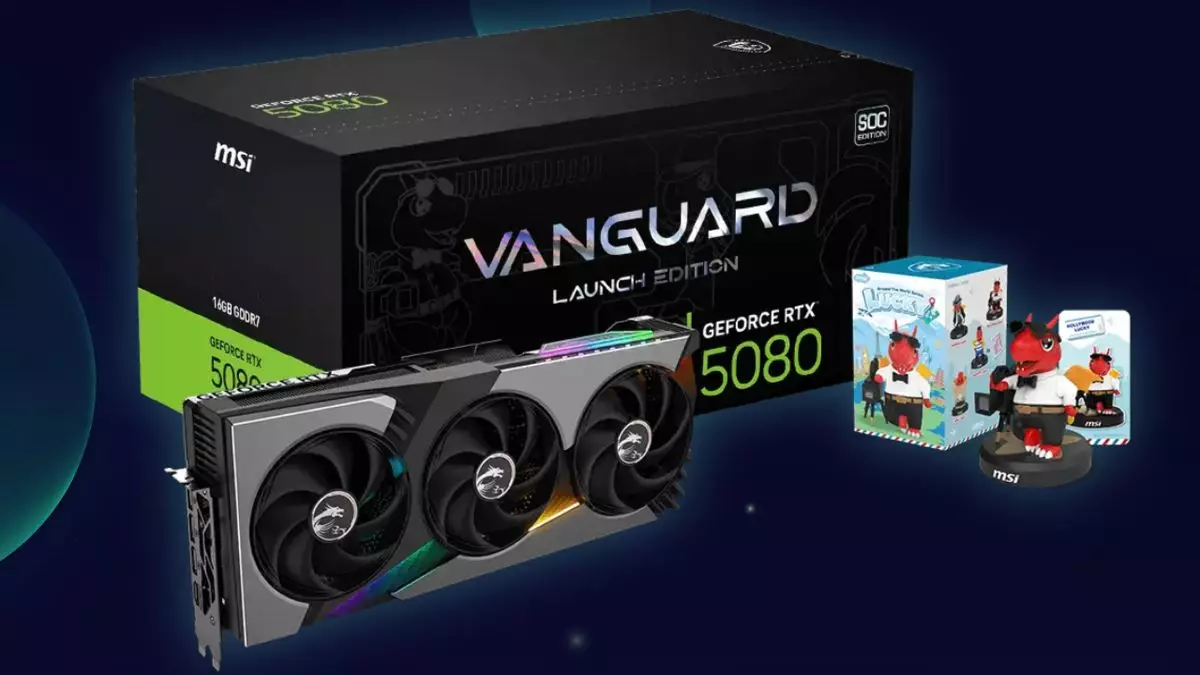When I was a child, my father nurtured a peculiar dream of turning his modest collection of Natwest piggy banks into a lucrative investment for my future. Spoiler alert: They never amassed enough value to support even the most basic rental in Britain. This nostalgic notion of collectible treasures resonates eerily with Nvidia’s latest promotional strategy via MSI, which has sparked curiosity and excitement throughout Taiwan. The initiative involves gathering a series of enticing Lucky Dragon figurines, with the promise of an RTX 5080 at the end—a tantalizing prize compared to the superficial hopes of my father’s piggy bank collection.
Musing over the mechanics of this promotion reveals a blend of childhood whimsy and adult gaming desires. MSI has brilliantly crafted a marketing approach that transforms the simple act of purchasing a high-end graphics card into an engaging treasure hunt, intertwining the thrill of collectible figures with the urgency of acquiring cutting-edge tech. Unlike my father’s unrealized hopes, there’s a genuine thrill here that aligns with the current gaming industry’s focus on engagement and excitement.
The Value of the Hunt: A Gaming Treasure Trove
However, it’s essential to unpack the intricacies surrounding this promotional scheme. To actively participate in this hunt for the cheerfully designed dragon figures, Taiwanese consumers must purchase a specific launch edition of MSI’s RTX 50-series GPUs. Given the current market climate characterized by supply shortages and inflated prices, this quest isn’t without its challenges. Enthusiasts keen on obtaining an RTX 5080 must navigate through the complexities of availability and price points, bringing forth a sense of urgency that possibly mirrors the forced desperation of a childhood collector.
Notably, with the campaign’s parameters set, the Lucky Dragon figurines themselves became more than just promotional items; they evolved into a currency of their own. A budding second-hand market has reportedly emerged, with individuals offering generous sums—up to NT$4,000 (around $121)—for specific figurines. This secondary market hints at a larger cultural shift within the gaming community, where collectible culture increasingly intersects with consumer capitalism, creating pockets of potential financial gain for savvy traders.
Sentimental Insights Amidst Market Frenzy
Reflecting upon the evolution of collectibles, I can’t help but reminisce about my own experiences as an admirer of gaming paraphernalia. For years, my shelves have been adorned with figurines and memorabilia gathered from various gaming events. One such treasure, an MSI dragon figurine, sits innocently amongst my collection, devoid of monetary value but rich with sentimental worth. Despite its lack of financial significance, the dragon is a reminder of experiences and the profound joy that games have provided in my life.
Yet, the allure of this promotion raises questions about value and worth in the collector’s mindset. Do we attribute value solely based on resale potential, or is there an intrinsic worth tied to the memories and narratives each item holds? The MSI campaign brilliantly sparks these conversations, even if subconsciously, illuminating how our attachments to gaming artifacts can shape our perceptions of both nostalgia and capital.
Gaming Collectibles: A Double-Edged Sword
The dilemma presented by promotions like this encapsulates a broader commentary on the gaming economy and collector culture. As hopeful gamers chase after elusive game upgrades through figurine assembly, we must also consider the potential impact of inflated markets on the community. Is this chase infectious enthusiasm, or does it merely commercialize our passion for gaming in ways that can detract from the enjoyment itself?
As I ponder the promotional nature of the Lucky Dragon campaign, it becomes apparent that there’s a delicate balance. Engaging collectors, fostering communities, and rewarding consumers can spark excitement and enhance the gaming experience. However, when the line blurs between joy and avarice, it risks creating an exhausting demand for acquisition that overshadows the deep-rooted enjoyment of gaming.
Through the lens of this MSI promotion, we’re invited to reconsider not just what we collect, but the underlying motivations driving our pursuits within the gaming culture. The experience of this promotion reflects a distinct moment in time, one where nostalgia, gaming innovation, and market strategies collide, challenging us to navigate the otherwise familiar pathways of passion with newfound intentions.

